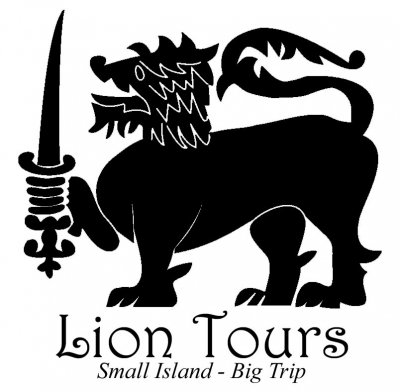Sri Lanka Population: 21,481,334
Background
The first Sinhalese arrived in Sri Lanka late in the 6th century B.C., probably from northern India. Buddhism was introduced in about the mid-third century B.C., and a great civilization developed at the cities of Anuradhapura (kingdom from circa 200 B.C. to circa A.D. 1000) and Polonnaruwa (from about 1070 to 1200). In the 14th century, a south Indian dynasty established a Tamil kingdom in northern Sri Lanka. The coastal areas of the island were controlled by the Portuguese in the 16th century and by the Dutch in the 17th century. The island was ceded to the British in 1796, became a crown colony in 1802, and was formally united under British rule by 1815. As Ceylon, it became independent in 1948; its name was changed to Sri Lanka in 1972. Tensions between the Sinhalese majority and Tamil separatists erupted into war in 1983. After two decades of fighting, the government and Liberation Tigers of Tamil Eelam (LTTE) formalized a cease-fire in February 2002 with Norway brokering peace negotiations. Violence between the LTTE and government forces intensified in 2006, but the government regained control of the Eastern Province in 2007. By May 2009, the government announced that its military had defeated the remnants of the LTTE. Since the end of the conflict, the government has enacted an ambitious program of economic development projects, many of which are financed by loans from the Government of China. In addition to efforts to reconstruct its economy, the government has resettled more than 95% of those civilians who were displaced during the final phase of the conflict and released the vast majority of former LTTE combatants captured by Government Security Forces. At the same time, there has been little progress on more contentious and politically difficult issues such as reaching a political settlement with Tamil elected representatives and holding accountable those alleged to have been involved in human rights violations at the end of the war.
Geography
Strategic location near major Indian Ocean sea lanes
Location: Southern Asia, island in the Indian Ocean, south of India
Geographic coordinates: 7 00 N, 81 00 E
Area: total: 65,610 sq km land: 64,630 sq km water: 980 sq km
Size comparison: slightly larger than West Virginia
Land Boundaries: 0 km
Coastline: 1,340 km
Maritime claims: territorial sea: 12 nm contiguous zone: 24 nm exclusive economic zone: 200 nm continental shelf: 200 nm or to the edge of the continental margin
Climate: tropical monsoon; northeast monsoon (December to March); southwest monsoon (June to October)
Terrain: mostly low, flat to rolling plain; mountains in south-central interior
Elevation extremes: lowest point: Indian Ocean 0 m highest point: Pidurutalagala 2,524 m
Natural resources: limestone, graphite, mineral sands, gems, phosphates, clay, hydropower
Land use: arable land: 13.96% permanent crops: 15.24% other: 70.8% (2005)
Irrigated land: 5,700 sq km (2003)
Natural hazards: occasional cyclones and tornadoes
Current Environment Issues: deforestation; soil erosion; wildlife populations threatened by poaching and urbanization; coastal degradation from mining activities and increased pollution; freshwater resources being polluted by industrial wastes and sewage runoff; waste disposal; air pollution in Colombo
International Environment Agreements: party to: Biodiversity, Climate Change, Climate Change-Kyoto Protocol, Desertification, Endangered Species, Environmental Modification, Hazardous Wastes, Law of the Sea, Ozone Layer Protection, Ship Pollution, Wetlands signed, but not ratified: Marine Life Conservation
People
Population: 21,481,334 (July 2012 est.)
Age structure: 0-14 years: 24.9% (male 2,705,953/female 2,599,717) 15-64 years: 67.2% (male 6,993,668/female 7,313,440) 65 years and over: 7.9% (male 720,219/female 950,916) (2011 est.)
Median age: total: 31.1 years male: 30.1 years female: 32.2 years (2012 est.)
Population growth rate: 0.913% (2012 est.)
Birth rate: 17.04 births/1,000 population (2012 est.)
Death rate: 5.96 deaths/1,000 population (July 2012 est.)
Net migration rate: -1.95 migrant(s)/1,000 population (2012 est.)
Sex ratio: at birth: 1.04 male(s)/female under 15 years: 1.04 male(s)/female 15-64 years: 0.96 male(s)/female 65 years and over: 0.75 male(s)/female total population: 0.96 male(s)/female (2011 est.)
Infant mortality rate: total: 9.47 deaths/1,000 live births male: 10.44 deaths/1,000 live births female: 8.45 deaths/1,000 live births (2012 est.)
Life expectancy at birth: total population: 75.94 years male: 72.43 years female: 79.59 years (2012 est.)
Total fertility rate: 2.17 children born/woman (2012 est.)
HIV/AIDS - adult prevalence rate: less than 0.1% (2009 est.)
HIV/AIDS - people living with HIV/AIDS: 2,800 (2009 est.)
HIV/AIDS - deaths: fewer than 200 (2009 est.)
Nationality: noun: Sri Lankan(s) adjective: Sri Lankan
Ethnic groups: Sinhalese 73.8%, Sri Lankan Moors 7.2%, Indian Tamil 4.6%, Sri Lankan Tamil 3.9%, other 0.5%, unspecified 10% (2001 census provisional data)
Religions: Buddhist (official) 69.1%, Muslim 7.6%, Hindu 7.1%, Christian 6.2%, unspecified 10% (2001 census provisional data)
Languages: Sinhala (official and national language) 74%, Tamil (national language) 18%, other 8% note: English, spoken competently by about 10% of the population, is commonly used in government and is referred to as the link language in the constitution
Literacy: definition: age 15 and over can read and write total population: 91.2% male: 92.6% female: 90% (2010 census)



